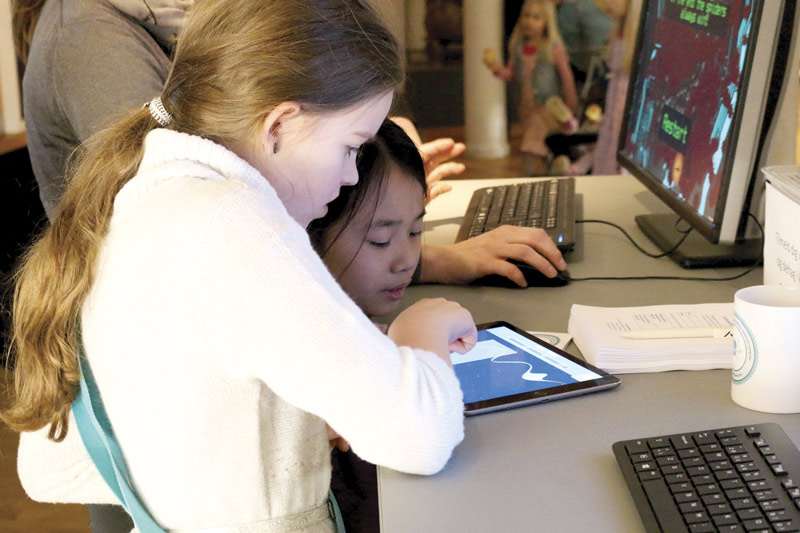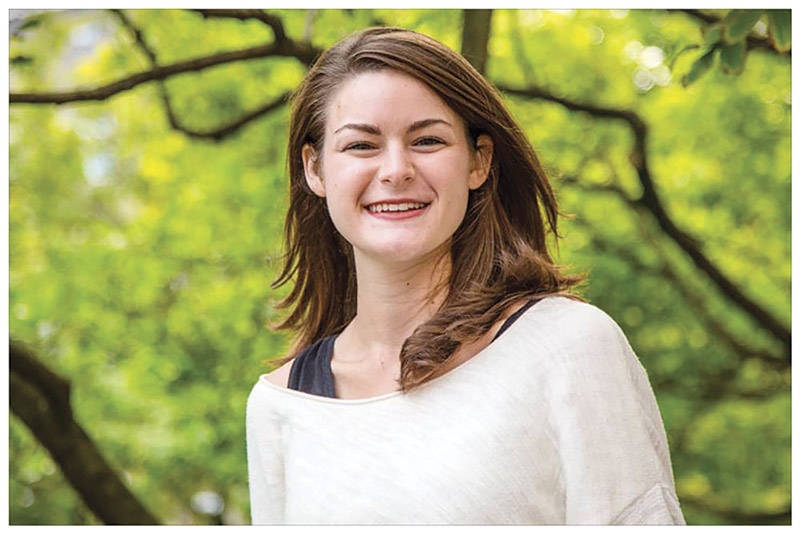The Art of the Game
Fall
2016
Feature
The Art of the Game
Gaming: Pushing the boundaries of scientific research
By:Janet Rafner
Fulbright US Student Programs 2015–16, Niels Bohr Institute, University of Copenhagen, University of Aarhus

Want to push the boundaries of scientific research by playing games? I decided to give it a try when I joined ScienceAtHome, a large-scale crowdsourcing and citizen-science project based in Aarhus University in Denmark.
Many of the most interesting problems in the scientific community are immensely complex. Often these challenges are too difficult to tackle even for the best scientists and the most powerful computers. But people, including non-scientists, can help find solutions if the problems are properly presented and if they are given the right tools. Specifically, those tools are citizen science and gamification. Citizen science opens the doors of the laboratory and invites people of all backgrounds to contribute to scientific problem-solving on a voluntary basis. Gamification, the process of turning a problem or task into a game, is one of the most important tools for scientists, making their scientific investigations tangible and accessible for the general public. By playing the game "Quantum Moves," people help Aarhus University researchers determine the best process by which to move atoms in a quantum computer.
So how did I get here? How did I join this incredible group of scientists, game developers, designers, and visual artists who create fun games for citizens to contribute to quantum physics, model human thinking, and much more?
Introductions can be transformative. We all have ideas about what we would like to do in our careers, but achieving those ambitions can be daunting. A chance hallway meeting in 2013 with a professor at the University of Virginia’s physics building led me, a 2015 Fulbright Fellow, University of Virginia graduate, and former SPS officer, to pursue the intersection of art and science in Denmark and to a project on the gamification of physics research.
Two years ago, I would never have imagined that I would be splitting my time between the University of Aarhus, which is developing ways to crowdsource research through game play, and science communication projects at the Niels Bohr Institute in Copenhagen.

As an undergraduate, I pursued an unusual mix of physics and studio art, and began volunteering with outreach programs such as National Physics Day and a program that offered middle school girls hands-on physics experiences. As an example, I came up with the idea to teach them how to photograph physics phenomena, such as Chladni plates (to foster an understanding of standing waves), how digital photography works, and how to best light a subject and frame a subject to capture and convey the intended effect. I also became involved in my university’s SPS chapter.
One day during this time, I went to office hours, but I didn’t go in because I felt a bit intimidated, as many students do. Instead, by chance, I ran into a professor, Lou Bloomfield, in the hallway and we started talking about my interests. Within a few minutes he went online and introduced me to a professor at Paris Sud, who led an outreach project called Physics Reimagined, and later set up an internship for me for the summer with funding from both the University of Virginia (UVA) and the French Centre National de la Recherche Scientifique (CNRS). This chance hallway meeting turned out to be vital for my career.
Meanwhile, many of my leadership skills were developed through SPS. As one of our main projects, we started a physics “Big Siblings” program to provide mentorship to underclassmen physics majors or prospective majors. Starting last fall, each participating underclassman was paired with an upperclassman to help with questions about courses, professors, research, etc. The goal of this project was to find a way to provide guidance, advice, and insights regarding being a physics or astrophysics major at UVA. We paid close attention to a mentee’s extracurricular activities, minors, or intended double majors and paired them with mentors with similar interests. The other SPS officer, Mita Tembe, and I worked diligently to build the mentorship program. Through this initiative, we hoped to both accelerate research and grow a stronger student community within the physics department.
Helping others through the mentorship program opened my eyes to how important these relationships are for achieving your aspirations. During my internship at Paris Sud, I put everything into it. The head of the group, Professor Julien Bobroff, and the whole team were great to work with. Being immersed in such a creative environment was an amazing experience. They were teaching courses by bringing physics and design students together to explore interdisciplinary projects. A paper on this course format has been accepted for publication in Nature.1 The Physics Reimagined effort also embodies a strong facet of physics outreach: informing and shaping the culture of physics so that it is more accessible and engaging to both prospective students and the public. I still feel like I’m part of their extended family and hope to collaborate whenever possible in the future.
Understanding the importance of mentorships has also been crucial to my current Fulbright work. I contribute to diverse scientific and outreach projects by tapping into my motivations, talents, and collaboration skills and bringing the concepts of complex physics into the vernacular. This is an exciting niche field that is just taking off, so for me the future is clearly “game on.” Professors Rikke Schmidt-Kjærgaard and Jacob Sherson at Aarhus have made these projects possible—I couldn’t ask for more supportive faculty members. I’m looking forward to being a mentor to rising science and design students as I continue to explore how technical tools and artistic creativity can be used to express complex concepts in science and share my findings internationally. //
Two of the ScienceAtHome games, Quantum Moves and Skill Lab, are available on the App Store for Apple products and the Play Store for Android.
